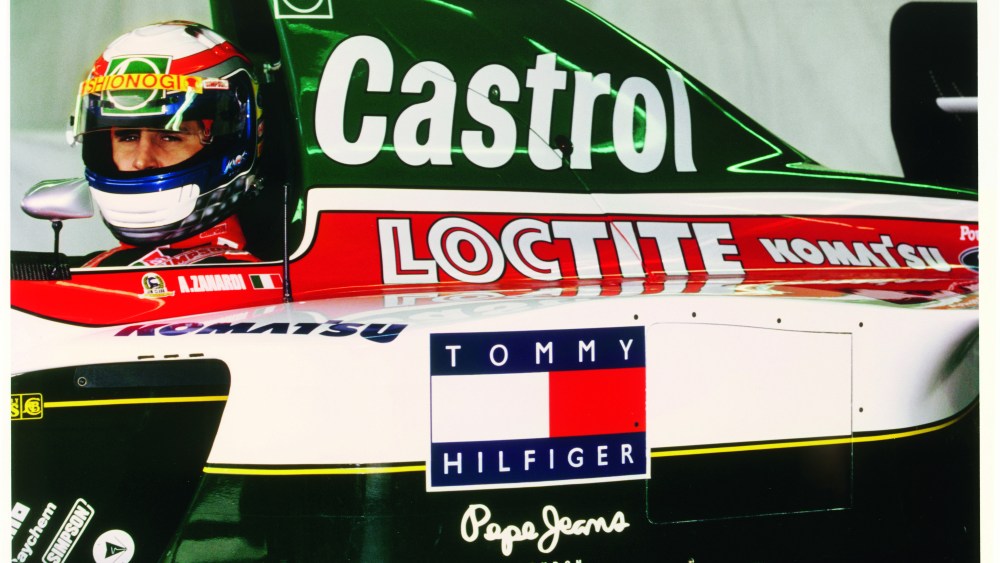The Palm Springs Art Museum is paying tribute to the desert city’s history of inclusivity stretching back to the early 20th century with a major new initiative titled “Q+ Art,” which is dedicated to “centering LGBTQ+ voices in the history of art,” according to the museum’s executive director Adam Lerner.
The first exhibition to debut as part of the initiative is “David Hockney: Perspective Should Be Reversed, Prints From the Collections of Jordan D. Schnitzer and His Family Foundation,” on view through March 31.
Featuring 166 works spanning six decades of Hockney’s career — from his earliest etchings in the mid-1950s and ‘60s to his California and British landscapes, to his recent experiments with the Xerox copy machine, iPad and inkjet printer — the show examines the artist’s way of looking at the world, and his innovative experiments as a printmaker.
You May Also Like
“The hypothesis is that being a gay artist might have also informed how he sees the world and be part of his desire to subvert photography as a unique way to represent the world,” said chief curator Christine Vendredi, who joined the museum earlier this year from Louis Vuitton, where she was art, culture and heritage director for 12 years.
“Hockney throughout his career is showing you a queer perspective on the world that’s outside the norm,” Lerner explained during a gallery tour.
From the artist’s first visit to the U.S., the semi-autobiographical series of etchings “A Rake’s Progress, 1961-1963” is on display, depicting a young gay man’s emerging identity in ’60s New York City, including a plate with a bottle of “Lady Clairol,” referring to the brand of hair dye Hockney used to dye his hair blond for the first time.
Also from that time period is a complete set of the 13 etchings Hockney included in an illustrated book inspired by C.P. Cavafy’s love poems, with black-and-white line drawings of homoerotic scenes.

Landscape and portrait prints explore how Hockney shifted perspectives, literally, painting the courtyard of the Hotel Romano Angeles in Mexico from different vantage points, for example, and how he stitched Polaroid photos together to capture the vastness of the Grand Canyon.
The artist paid tribute to his hero Pablo Picasso by experimenting with Cubism to paint one of many images of his friend, fashion designer Celia Birtwell, and brought intimacy to portraits of his partner and muse Gregory Evans in the 1980s, and to his Los Angeles confidantes Christopher Isherwood and Don Bachardy, a couple when Hockney painted them in their living room in Santa Monica in 1968.
A wall of framed prints grouped together demonstrates how Hockney used photocopiers not only to make multiples, but as art-making machines. “To create this little dog, he had mashed potatoes on the photocopier glass and he also painted on it,” Lerner said.

Among the many iPad works in the show, one of the most impressive is “A Year in Normandie,” showing the succession of the seasons as a 250-foot-long frieze reminiscent of the Bayeux tapestry. During COVID-19 lockdown, using the iPad, Hockney created 100 images of house, his garden and the surrounding countryside, printed them out and assembled them to show the seasonal changes.
The show ends with the large scale work “25th June 2022, Looking at the Flowers (Framed),” a photographic drawing printed on five sheets of paper depicting the artist in a room looking at his own framed iPad drawings, which are mounted in the same sequence on the facing wall of the gallery. Visitors are invited to sit in the same chairs from the work to take their own perspective-busting photos of the scene.

© David Hockney assisted by Jonathan Wilkinson Courtesy of The Palm Springs Art Museum/David Hockney / Tyler Graphics Ltd.
“It’s about his love-hate relationship with photography and how he subverts it to come up with something to give you another perception of the world around you, to allow you to question what you see,” Vendredi said.
All but two of the works in this retrospective are on loan from Portland, Ore.-based real estate developer, art collector and philanthropist Jordan Schnitzer and his foundation, which holds 22,000 works, most of them prints.
“They borrowed a lot of early works which I’m delighted about, which show Hockney’s early years, dealing with his coming out, his sexuality and who he was when homosexuality was a crime…It’s hard for us to imagine now what that was like,” Schnitzer said of the exhibition, before musing on Hockney’s continuing legacy. “He also showed us how technology shouldn’t be feared by creative people,” Schnitzer continued. “He used Xerox machines for prints, he took Polaroids and put them together to help us look at the world in a fascinating way. He was the first major artist to adopt the iPad and the software that allows you to create. Right now, with all the talk about AI and what it’s going to do…well let’s just wait and see.”



